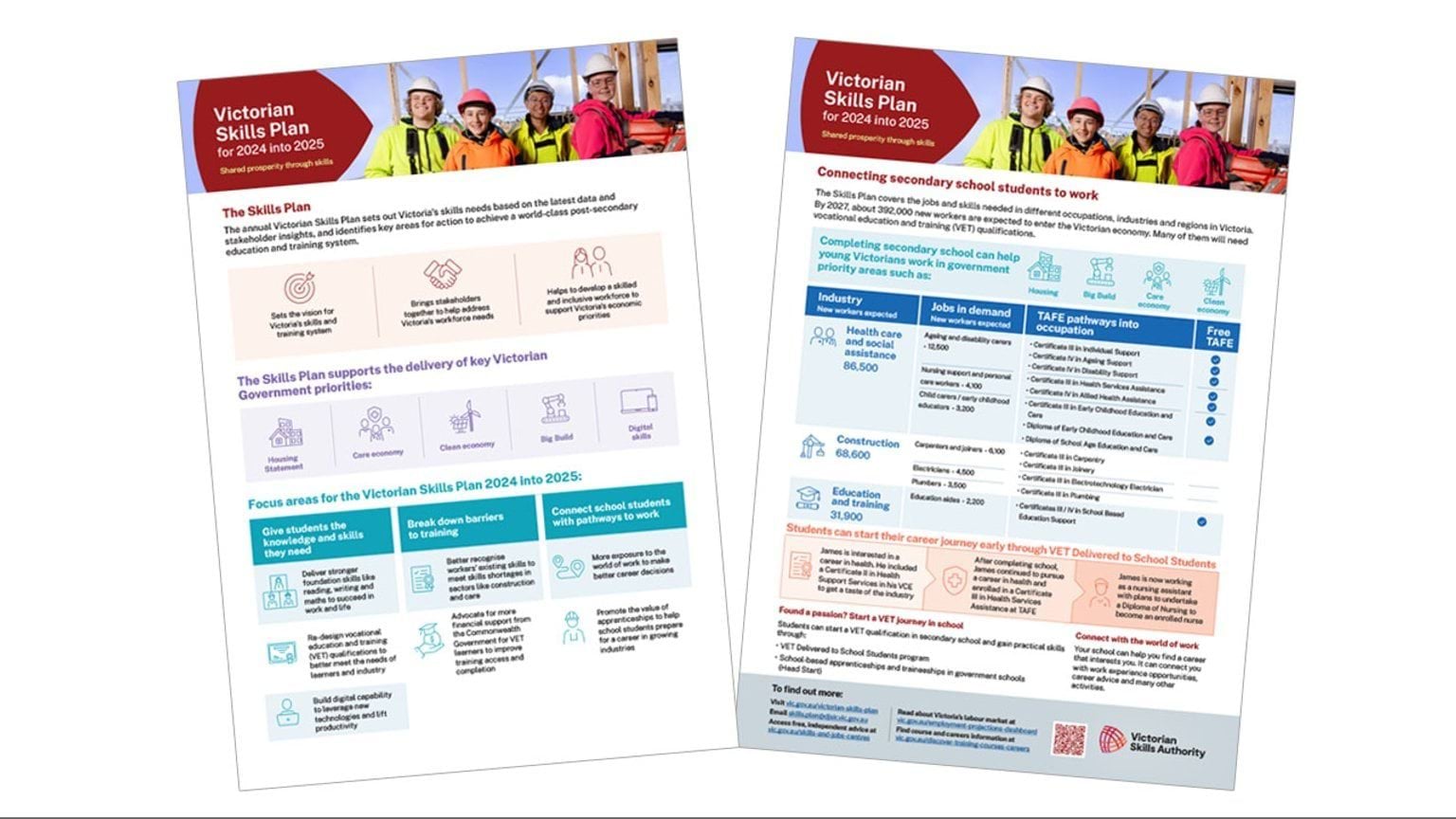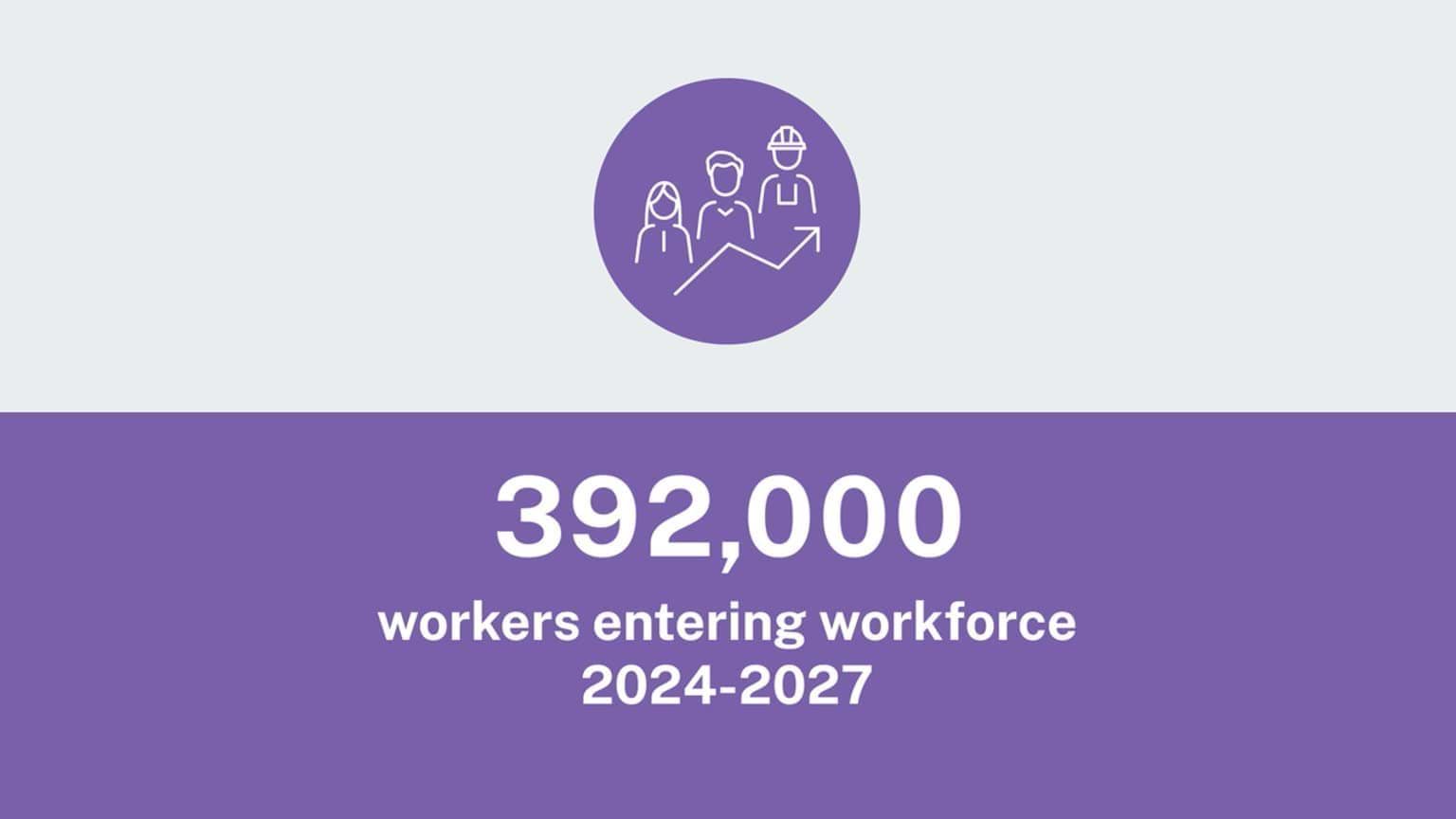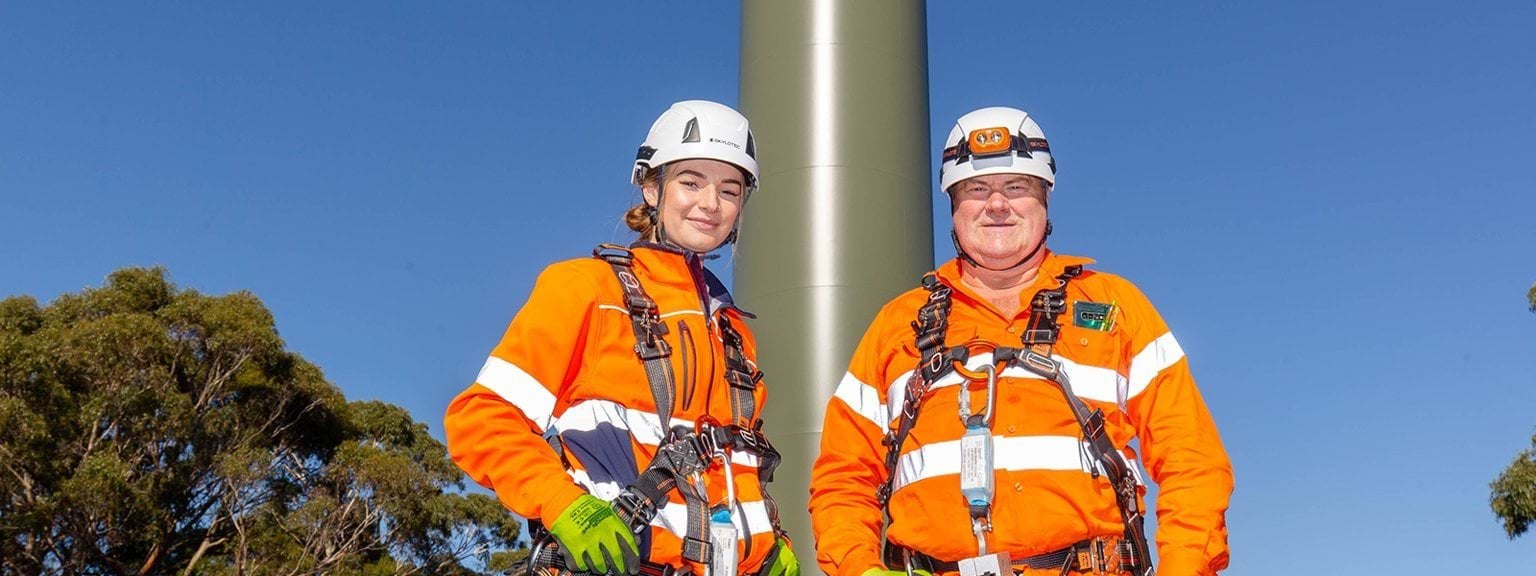The Victorian Skills Plan underpins Victoria’s skills roadmap, to help TAFEs and other training providers plan for courses, industries ensure they have the workers they need, and Victorians with education and training pathway choices for success in work and life.

Victorian Skills Plan for 2024 into 2025
Read the third Victorian Skills Plan.
Find out more about the Victorian Skills Plan for 2024 into 2025
Previous Victorian Skills Plans
Updated








